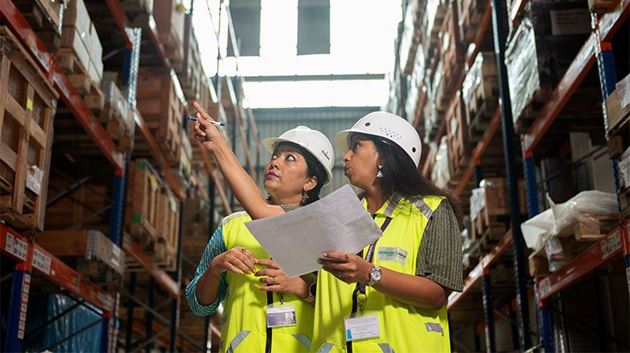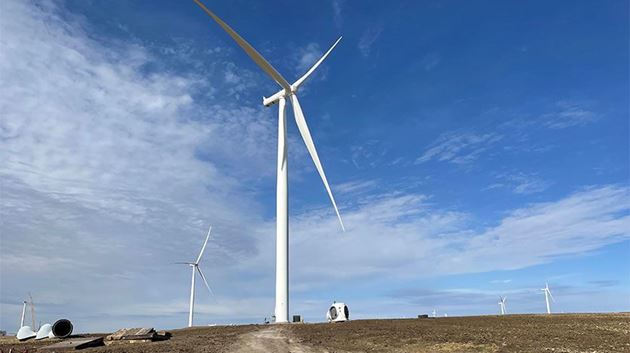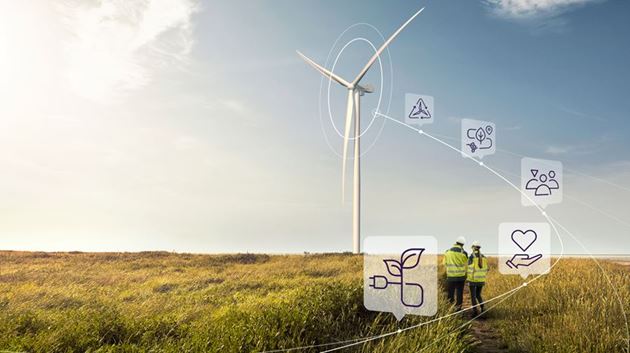
Our action plan to become climate positive
Extreme weather conditions; droughts in Europe, floods in Australia, heatwaves in India and much more – are a sign that the climate emergency is already happening, and on a global scale. Time is ticking, and efforts to reduce emissions need stepping up and scaling up.
Actions speak louder than words. At Siemens Gamesa, we have committed to address the emissions we generate directly through our core business operations, and those of our supply chain. Initial results are strong and give us the confidence that we can not only decarbonize our own operations – without the use of offsets – by 2030 but also decarbonize our entire value chain.
One key metric we are focussing on is the carbon intensity; how much CO2eq is emitted during the production of our wind turbines relative to the MW installed. In 2017, when we started to formalize our roadmap towards net zero, we were generating 12.3 ton of CO2eq per MW installed. By the end of financial year 2021, this had been cut to 2.8 ton per MW installed.

The figures refer to Scope 1 and 2 emissions – those which we as a business have control over. The improvement in our carbon intensity numbers came from increasing our efficiency, electrifying our operations where possible while making sure all electricity we used was generated from renewables.
It is important to mention that our targets and results are validated by the Science-Based Targets Initiative (SBTi), a global body enabling businesses to set emissions reduction targets in line with science. Independent oversight is pivotal in order to provide consistency and to prevent greenwashing, which is why we are also having our Greenhouse Gas Emissions report externally validated every year
Addressing our supply chain – known as Scope 3 emissions – will help achieve the goal of being climate positive, but there is still more we can do internally as part of our ongoing efforts. One idea we are working on is to look at how to eliminate “non-value adding use of energy” – often wrong configuration of ventilation or compression processes, which currently require energy but are not directly related to how efficient, reliable, or cost effective our wind turbines are for our customers.
Zero emission per MWh will also drive our ultimate aim to be climate positive by 2040. By this stage we will be removing more CO2 from the atmosphere than we emit. Reaching zero emissions in our operations requires innovative thinking for certain processes. For example, we will be one of the first companies to test out a new (green) hydrogen-powered reachstacker (the technical term for the cranes used to stack shipping containers) in our Brande production where we are already producing green hydrogen using an electrolyzer which can be powered directly by a wind turbine.
Elsewhere, we are exploring the potential of microalgae, an initiative which aligns with our belief in the circular economy. Any CO2 emitted by our production unit in Asteasu, Spain, will be used to cultivate microalgae which can then be used as a resource in many sectors including agriculture, medicine, cosmetics, and food. The microalgae also has the ability to absorb additional CO2 from the atmosphere. Overall, this will reduce the emissions from the site by 70 tons of CO2 a year.
We believe that striving for climate positivity is an essential part of the transition towards net zero, because it is inevitable that some areas of human activity will take longer to decarbonize than others. As a leader in wind energy, we also want to be a leader in climate positivity. We recommend that the first step for corporations is to know what their emissions are by linking up with organisations such as SBTi.

Representatives from Siemens Gamesa, Algaloop and Guipuzcoa Provincial Council pose for a picture during World Enviroment Day 2022 to present Algaloop's decarbonization and circular economy project.
Corporations also need to face up to the challenge of Scope 3 emissions by talking to their supply chain about minimising emissions. This will develop its own momentum, as most corporations are part of someone else’s supply chain as well as having their own to manage.
As ever, we need governments to legislate and to encourage climate positivity through policy. However, the building blocks of this policy are, or should be, in place. The most effective way for corporations to kickstart their climate positive journey is to; increase its energy efficiency, electrify many operations and use electricity from renewable sources only. But this brings us back to one of our recurring themes –more onshore and offshore wind energy power plants need to be approved by governments in order to encourage investment and speed up the transition to net zero by decarbonizing the grid.



